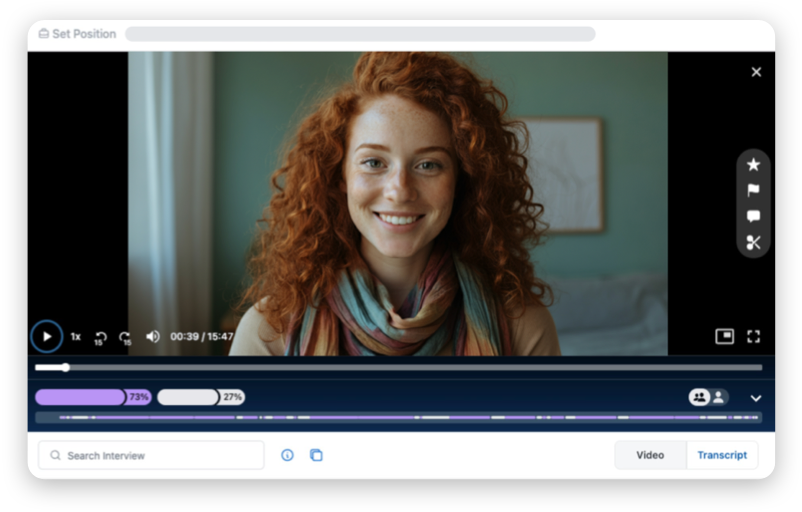Compensation & BenefitsHoliday & Leave Policies
Understanding Paid Time Off (PTO): Benefits, Policies, and Best Practices
For most businesses, an effective paid leave policy is integral to influencing both worker morale and overall productivity. Workers who use PTO often return more focused and productive, with a reported 40% boost in efficiency. Time away also supports better mental and physical health, creating a healthier workforce. Reputable organizations like the Society for Human Resource Management (SHRM) and the US Bureau of Labor Statistics have done many studies that validate the connection between job satisfaction and paid days off.
An effective leave scheme can have multiple benefits for the employer as well. If a company is looking to hire and expand, competitive leave benefits are a selling point that can attract top-quality candidates. When a company offers PTO, they provide employees with a workplace culture that encourages self-care. Additionally, workers with paid time off often respond more positively and show higher engagement at work. Proper leave compensation can also strengthen employee loyalty, improve retention rates, and limit turnover by increasing job satisfaction.

How Paid Time Off Works
Companies provide employees with paid time off, a benefit that allows them to take time away from work while still receiving pay. It is a critical allowance that gives workers the time they need to address personal obligations or rest.
PTO can include different types of leave to cater to employees’ specific needs. Personal days can be used for errands, mental health breaks, or personal obligations. Paid sick leave is for recovery from illness and to protect colleagues from potential infections. Some employees also schedule annual leave in shorter segments to mark family events or celebrations.
The amount of time allocated for leave depends on several factors, including time worked, accrual rates, and the nature of leave. A combination of federal and state legislation can further define what constitutes a fair time-away policy. Provisions will vary depending on the state your company is registered in. For example, California requires workers to be given at least five sick days, while Maine requires employers with more than 11 staff members to pay for unused time off.
Companies can set up the leave structure using different PTO models to meet legal requirements and employee expectations. Currently, the traditional and unlimited policies are the most popular.
For a leave entitlement plan to work effectively, it needs to be communicated clearly to employees. A well-developed policy should have guidelines outlining the following:
- Rules on using PTO days
- How PTO hours are tracked
- How to request leave
- Any possible blackout periods
- What happens to unpaid leave
When management has a comprehensive plan in place, staff members can take more control of their time away. Clear guidelines and early scheduling, enables employees to plan personal commitments with confidence, without disrupting workflow. Regardless of the specific structure, a company’s PTO policy should help employees and management by encouraging rest, incentivizing regular breaks, and creating a supportive company culture.

Traditional Paid Time Off
Traditional models rely on PTO accrual, where employees accumulate time off based on the number of hours worked or length of service. Within the traditional structure, companies have two choices. The first option is to separate vacation days, sick leave, and personal days into separate categories that can only be used in specific situations. The second option is a “PTO Bank” that tracks all their PTO as one value, which employees can use for anything they need.
No federal law mandates what a company’s accrual rate should be, and not every state sets a minimum. In the states that do, California, Arizona, and New Mexico are considered the best, with a conversion rate of one hour off for every thirty hours worked. In regions where there is no such stipulation, it is up to employers to set a fair accrual rate.
When accrued leave is not taken, it is up to the employer to detail what will happen to those unused hours. Generally, policies either allow unused leave to roll over into the following year for future use or offer employees compensation for that time. It is important to note that federal laws may influence whether unused PTO is paid out when an employee leaves the company.
A well-documented PTO policy helps maintain clarity on accrual rates, usage rules, and the potential for carrying over or forfeiting unused vacation time.
Advantages of Traditional Policies
The traditional system offers several advantages that make it a preferred choice for many organizations. The predictability associated with this structure is a key benefit, as employees and employers already understand how much PTO is available to them. In turn, this can simplify planning and scheduling of leave among team members.
Because employees understand what they are entitled to, traditional methods can also help facilitate setting boundaries. Therefore, it is easier to prevent the overuse of PTO, as hours must first be accrued before they can be used. Additionally, the accrual method ensures that employees take a balanced amount of time off, which is critical in avoiding burnout.
Finally, this framework reduces the administrative tasks for the HR team, allowing them to efficiently monitor and allocate PTO without extensive record-keeping or complex calculations. By providing a structured framework, traditional PTO supports organizational efficiency and employee well-being.

Unlimited PTO
Compared to traditional policies, the unlimited PTO model allows employees to take time away from work at their own discretion. As the name suggests, there is no set number of days, and employees are allowed to take as many vacation days as needed.
At its core, the unlimited PTO framework functions on trust. Management gives the employee freedom to make their own decisions about paid absences. Instead of concentrating on hours worked, this model is more result-focused. It allows employees greater flexibility in balancing their duties with their leave benefits.
It is important for the company’s unlimited policy to set clear boundaries on what is considered an appropriate amount of leave, and what is not. To prevent misuse, there are certain criteria that companies should follow. This includes setting out clear regulations in the employee handbook. A common limitation might highlight that although leave can be taken at any time of the year, the employee must ensure that all allocated responsibilities are fulfilled within a reasonable time. In other words, employees need to ensure that any time spent away from the office does not impact the completion of any major projects or company functions.
Because of the nature of this model, there is no need for a PTO bank or accrual system to track metrics such as hours worked. There is also no need to address unused time off, as annual leave days are not set. However, in some cases, HR might still need to record time off to fulfill legal obligations. This can include days needed for jury duty or for time away related to the Medical Leave Act, which is regulated at a Federal level.
Advantages of Unlimited PTO Policies
The key advantage of an unlimited PTO system is flexibility. A system that provides employees with the ability to take leave when required means that the organization can better support the needs of each individual. Consequently, the unlimited policy tends to improve employee satisfaction more than the traditional PTO model.
This model also benefits the employer. Employees tend to be more motivated and productive due to the freedom afforded to them. When employees are satisfied, they are less incentivized to look for better opportunities. Therefore, this leave model can also positively impact a company’s retention rates.
The unlimited model can also be a powerful recruitment tool, as PTO is a benefit that most applicants would consider before applying for a position. By offering unlimited paid personal time off, the business is more likely to attract talented recruits.
With the unlimited framework, companies can also lift the burden on their HR departments by reducing the need for regulatory tools. In contrast, the traditional system typically requires several administrative features to track employees’ leave.

Eligibility Requirements for Paid Time Off
Paid time off is not always afforded to all employees. Regardless of the company’s PTO model, you may need to meet eligibility requirements before you can access your paid time away. There are several requirements a company can incorporate, including a probationary period, employment status, and average working hours.
Clear eligibility guidelines ensure employees understand when to take leave and how to request it. This can be critical in managing employee expectations.
Employment Status and Work Hours
One of the key factors in deciding who is eligible for paid leave is employment status. Typically, the status of “full-time employee” is linked to the number of hours worked during a pay period. In order to be considered a permanent employee, the worker must meet a weekly threshold of between 32 and 40 hours. This means that the employee is expected to work approximately 160 hours in one month.
In contrast, it may not be as simple to define part-time or seasonal employee status using working hours. Instead, it makes more sense for status to be linked to the contract term rather than hours worked. For instance, a seasonal worker will only be given a short-term contract with an employment cycle between one and three months. Part-time employees are normally given a contract that is renewed annually.
Usually, organizations only offer PTO benefits to full-time workers. However, in some circumstances, a company may also provide part-time employees with partial benefits. In which case, a company will calculate the time off based on a prorated amount of hours worked within a pay period.
Length of Service and Probationary Periods
While employment status may specify who is eligible for PTO benefits, service length tends to influence how much leave an employee is entitled to. This includes probationary periods and employee tenure.
A probationary period is a system employers implement to test whether a new recruit will be a good fit for the working environment. During this time, the employee is evaluated to assess whether they can meet the demands of the job initially agreed upon by both parties. Probation can range from two months to a year, but a 90-day probationary period is the standard. During this time, employees only have limited access to benefits, including paid time off.
It is generally accepted that if a company utilizes a traditional model that relies on an accrual, probation will not limit the employee’s ability to accrue hours. Therefore, they earn time off from the first day of their employment. However, the employee cannot take those accrued hours off until the end of their trial period.
Length of service is another time-sensitive factor that influences PTO. Employees who work at the same company for several years display loyalty, which can be rewarded by improved contractual terms. Improved leave compensation is one-way employers can motivate long-term workers. This can be done by providing more annual vacation leave or adjusting the rate at which the employee earns time off.

Additional Influencing Factors
Performance Evaluations
Some companies allow a staff member’s performance to influence the amount of paid time off they receive. The goal is to incentivize employees to be more productive during office hours by rewarding additional leave.
Should an organization use this incentive program, it is important to follow clear guidelines to ensure fairness. A good example of a fair standard is that performance should always be linked to measurable actions or achievements. By relying on clear, objective criteria, businesses create a straightforward connection between effort and reward.
Location-Based and Legal Requirements
Location can also affect PTO eligibility, especially where local laws require employers to offer specific benefits. For instance, California requires employers to give a minimum amount of paid sick leave, while other states may have different provisions regarding sick leave and time off. Larger organizations with offices in multiple states often need to adapt their PTO policy to meet varying legal obligations.
Special Circumstances
Certain life events may also lead to PTO usage outside of normal vacation or sick days. Examples include jury duty or bereavement leave. Policies may also need to be adjusted to facilitate situations where employees need extended time away for medical reasons. Within these specialized circumstances, companies may be allowed to blend paid leave with unpaid leave to cover necessary absences while still maintaining compliance with the Medical Leave Act.

Best Practices for Taking Paid Time Off
Workers can take steps to maximize the benefits of their company’s paid time off policy. By following the advice below, employees can ensure that their personal time off will not affect the rest of the team and allow the company to keep functioning normally.
Planning and Communication
A well-organized approach to paid time off promotes a smoother workflow and helps maintain strong employee morale. By communicating their intentions to take paid time off in a timely manner, employees can ensure tasks are covered and reduce stress on coworkers.
To coordinate effectively, employees should set their vacation or personal leave dates in advance by submitting a time-off request form as soon as their schedule is known. This allows the human resources team adequate time to accommodate your time away. Additionally, discussing workloads and major projects with managers before finalizing leave can minimize disruptions and ensure fairness in managing time-off requests.
Employees should also be mindful of busy seasons or blackout periods when taking time off.
By proactively scheduling their time off, employees help maintain productivity and demonstrate respect for team responsibilities, resulting in smoother operations and mutual benefits for everyone.
Maximizing the Benefits of PTO
PTO is key to physical health, preventing burnout, and helping staff have a healthy work-life balance. No matter what paid time off policy your company decides to use, planning your annual time away to maximize recuperation can be integral to improving your overall well-being.
One way to get the most out of your paid vacation days is to spread them throughout the year rather than saving everything for December and January. Research shows that regular breaks increase employee morale and productivity. SHRM also recommends completely disconnecting during these breaks, which means no email, work calls, or digital contact with your employer. Taking a real break allows for deeper rest and, in turn, results in fewer sick days. By allowing staff to use PTO in a way that suits them, organizations help create a happier workforce.

Paid time off, when done right, prevents employee burnout, creates a healthier work environment, and promotes loyalty, which, in turn, reduces turnover and builds a positive company culture. By setting clear policies and respecting each person’s need for rest and personal obligations, businesses can support productivity and well-being. Employers who understand the legal, logistical, and practical requirements of leave can create policies that meet different employee needs while protecting the company’s ability to operate.
Frequently Asked Questions
How Much PTO Should I Get Annually?
With a traditional PTO policy, most private companies start with 10 days of PTO per year for a full time employee, which is about two weeks of vacation time. This can increase to 15 days after five years and 20 days after 10 years. Traditional systems often require the use of time-tracking software to calculate PTO in relation to the accrual rate.
Other companies offer unlimited PTO. Under this arrangement, employees can take time off when they want, with no set maximum number of days. However, employees must make sure to request time off in a way that doesn’t disrupt ongoing projects or daily work.
What Happens to Unused PTO at the End of the Year?
Some employers allow workers to use their unused PTO in the next year. Others have what is called a “use-it-or-lose-it” policy where any remaining days expire instead of rolling over. In states where the latter is not allowed, employers may be required to allow the PTO employees don’t use to be accrued.
Employers may also cap how much PTO can be carried over, while others offer a PTO payout scheme for any unused time.
Are There Legal Requirements That All Employers Must Follow Regarding PTO?
A PTO benefit is not federally mandated in the US. Some states and local jurisdictions have laws requiring companies to provide certain types of paid time off (often sick leave), and some states also regulate what happens to PTO when you leave a company. In such cases, employers are required to include unused time off as part of the severance pay for employees who are retrenched or let go. Where there is no state requirement, the employer’s policy determines how PTO is managed.










